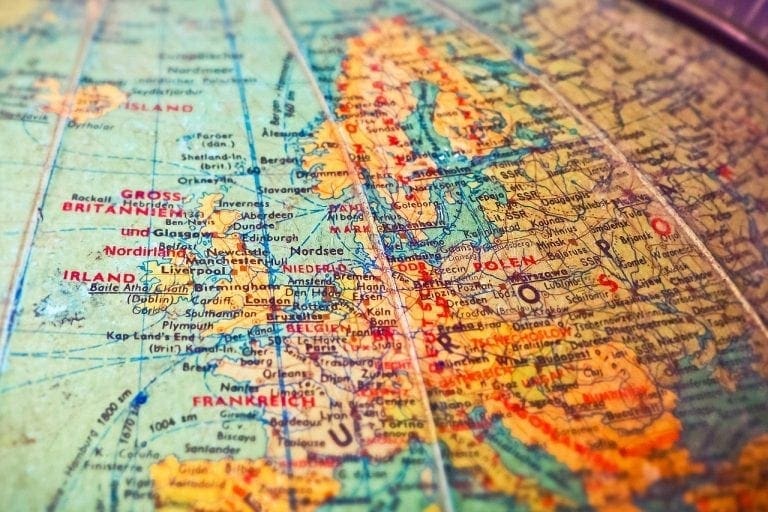How to Photograph Iceland – Tips and Tricks for Capturing the Beauty

If you’re visiting Egilsstadakirkja, use a polarizer at sunrise or sunset for exciting skies. A wide-angle lens also helps capture the symmetry of this great church. Capturing unique photos of Iceland involves exploring and discovering hidden gems independently. While visiting the most popular spots can be tempting, remember the lesser-known places!
Make Sure You Have the Right Gear
Iceland’s spectacular landscapes make it a photographer’s paradise, but some challenges come with this unique destination. It’s essential to be prepared and have the right gear, including a reliable camera, quality lenses, and warm clothing. Otherwise, you might be disappointed with the photos resulting from your trip to Iceland.
One of the best things you can do to prepare for a trip with a camper van Iceland is to practice using your camera and lens before you travel. Learning to shoot in manual mode would be best, giving you the most control over your photographs.
In addition, it’s a good idea to invest in a wide-angle lens. This will allow you to capture a larger scene and include more of the surrounding area. Bringing a tripod is also a good idea, as this will help you get sharp and clear images.
Another essential piece of equipment to bring is a raincoat. Iceland’s weather can be unpredictable, and you may encounter rain, sleet, or even snow during your trip. A raincoat will protect your equipment from the elements and keep you dry when you need to stop shooting.
Finally, remember to pack a pair of comfortable hiking shoes and warm gloves. You’ll be walking over rough terrain and want to stay on your camera and yourself! Also, wear your hiking boots around town before your trip to make them comfortable. Finally, bring a water bottle, as you’ll need to stay hydrated while photographing Iceland. This will prevent you from becoming dehydrated and keep your body temperature stable.
Plan Ahead
Iceland is one of the most popular destinations for photographers, and with good reason. The country is home to otherworldly landscapes, including geothermal geysers, glaciers, waterfalls, mountains, black sand beaches, volcanoes, and the Northern Lights. With such an embarrassment of riches, taking unique and compelling photos can be challenging.
Fortunately, you can use plenty of tips and tricks to make your photography in Iceland stand out from the crowd. The best place to start is by planning your trip carefully. For example, if you want to photograph the famous Seljalandsfoss Waterfall, arrive before sunrise to get an uncluttered shot without too many tourists.
Another important tip is to be flexible and adapt to the changing weather conditions. While shaving a general idea of what you want to photograph is nice, don’t hesitate to change your plans if the situation demands it. A sudden snowstorm can completely thwart your plans for a beautiful sunset, so be prepared to shift your schedule accordingly.
Also, don’t feel free to experiment with different angles and perspectives. A different perspective can add new dimensions to an image and be a great way to avoid cliche shots. For instance, instead of shooting the usual view of a waterfall from below, try taking it from above or on the side to create a more dynamic composition. Consider using a polarizer to enrich colors and cut through the haze, especially at midday. This is a great way to bring out the color in the sky and create more drama in your images.
Keep an Eye on the Weather
When you visit Iceland, the weather can be unpredictable. The conditions can change from sunny to foggy, and you may need to adjust your settings on the fly to capture the best images possible. The best time to photograph waterfalls is in the morning when the light is soft, and the mist can create a dreamlike effect. Use a slow shutter speed and a tripod to reduce camera shake for best results.
If you want a different perspective on a famous landmark, take a picture behind it. This will help show the object’s scale and is a great way to make your photos more interesting. Another way to create unique images is to include people in the shot. A person in the picture can add a sense of scale and make the landscape more believable.
The weather in Iceland can be dramatic and moody, making it an ideal place to practice your creative photography skills. Take some time to explore the countryside and look for unique perspectives of well-known landmarks. You might even discover some hidden gems along the way!
One of the most iconic sights in Iceland is Akureyrarkirkja, a stunning church with bold lines and a soaring spire. Whether you’re religious or not, the architecture is breathtaking and provides endless photo opportunities. You can also photograph the mountains and glaciers for a spectacular view.
If you’re visiting Iceland during the summer, bring a polarizer to enhance the colors of the sky and water. You can also use it during the winter to improve the contrast between the snow and ice.
Be Prepared for Crowds
If you’re a passionate nature photographer, visions of Iceland likely dance in your head. With its geological wonders and rugged beauty, it’s no surprise that this small island nation attracts thousands of travelers each year seeking to capture the perfect shot. Unfortunately, the spectacular sites can make photographing all you wish to see easier.
Plan your itinerary and research the potential photo locations in advance to ensure you get all the things. This will allow you to arrive at a site before the tour buses and be more selective with your shots.
For example, if you want to shoot the iconic Kirkjufellsfoss waterfall, choose a spot away from the main viewing area where there aren’t many people. Alternatively, you can explore the lava fields surrounding the falls to find a unique composition. Additionally, you can experiment with different perspectives to create another image than the one most photographers are used to seeing.
If the weather is nice, you can even use a long exposure with a neutral density filter to blur clouds and add a sense of dynamism to your shot. This technique can work exceptionally well for waterfalls and fjords.
Another tip when shooting famous spots in Iceland is to try new angles or perspectives that haven’t been captured. For example, if you want to capture the renowned waterfall in a less touristy way, consider heading to the opposite side of the waterfall at sunrise or sunset. The reflections in the water may be more attractive at these times of the day. Additionally, you can experiment with a wide-angle lens to capture more of the waterfall in your frame.
Take Your Time
You will have a sufficient number of beautiful photo opportunities in this otherworldly landscape. But even if you can’t stop at every spot on your list, there are ways to make the most of your time in Iceland to capture the most eye-catching images.
For example, if you’re shooting a waterfall, try to arrive just before the tour buses come to avoid crowds and ensure your photos are as sharp as possible. Or, if you’re visiting a famous landmark like Godafoss or Egilsstadakirkja in the Snfellsnes peninsula, consider going there early or during dusk when the light is soft, and the sky is more interesting.
Another way to make your photos more unique is to incorporate other travelers. This can be a great way to show the scale of a landscape and make it feel more natural. Plus, it’s an excellent opportunity to meet other travelers and share your love of photography!
Similarly, if you’re shooting an iceberg, experiment with different angles and compositions to create more interesting images. Hitting it from above or from below, for instance, can make it seem much larger or smaller than it is. Or, by using a slow shutter speed and waiting for the water to break over the iceberg, you can create enticing leading lines that draw your viewer’s attention to the subject.
We’ll take you to the country’s most awe-inspiring natural wonders, from shimmering glaciers to exploding volcanoes. You’ll also witness Icelandic horse herds grazing on black-sand beaches and get cozy with the planet’s largest colony of Atlantic puffins!








